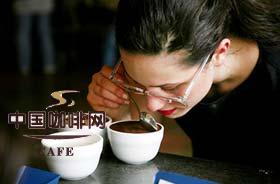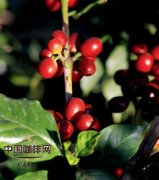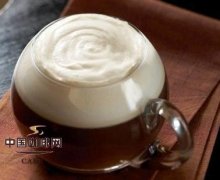Decaf coffee is becoming more and more popular, starting with the selection of coffee beans.

Once upon a time, people who drank decaf coffee (coffee with low caffeine) were always an unpopular group. The owners of the coffee shop dislike them for being nosy, and people who claim to be real coffee families also think that they are pretentious, and they always seem to sit at the table of the losers in the cafe. But now, low-caffeine people have also ushered in spring. Some coffee roasters seem to smell the business opportunity of decaf and begin to look for a variety of decaf that is still delicious. Peter, who runs a counter-culture cafe in Durham, North Carolina, USA. Giuliano obviously smelled it. In his view, "decaf is the real coffee fan." Because they drink coffee not to stay awake, but to like the taste of coffee. "
Start by choosing coffee beans.
Decaf has also been commercialized for some time. Brands such as Kaffee HAG and Sanka have been selling decaf since the beginning of the 20th century. However, at that time, the decaf coffee was more of an experiment, and the taste of the coffee was greatly reduced. Later, as more and more companies joined the business of developing high-quality coffee, only second-rate coffee beans were used to make decaf.
Doug, an executive at an American coffee chain? Wales confirmed this: "in this business, there was and still is the idea that it is just decaf and that you can just use some coffee beans to deal with it." That's why most decaf doesn't taste good. " Wales is currently working on developing decaf that tastes better.
Therefore, if the taste of decaf coffee is not discounted, the selection of coffee beans is very important. The damage to the taste of decaffeinated coffee is mainly due to the steps of soaking or steaming coffee in water in the process of removing caffeine. Now, thoughtful coffee roasters are looking for varieties of coffee beans that retain their fragrance, and even if they go through the process of removing caffeine, their acidity and consistency will not be lost. Of course, coffee beans are also an agricultural product after all, and the longer it takes from the farm to the coffee cup, the more decaf coffee will naturally lose its flavor.
In a coffee bakery in Chicago called intellectual, the beans of decaf come from Honduras. After the perfect removal of caffeine, the taste of the coffee is still strong. Jeremy? Touck, who runs four buckets of coffee bakery in San Francisco, found that beans from the Neri region of Kenya are good ingredients for making decaf coffee, and the citrus flavor is well preserved in the caffeine removal process.
Decaf coffee is becoming more and more popular.
Touck's interest in decaf was not on the spur of the moment. Like many of his customers, Touck's doctor advised him to limit his caffeine intake. In fact, decaf coffee is becoming more and more popular. According to the National Coffee Association, about 10% of the population of the United States drinks decaf every day. But according to people who run the industry, decaf tends to consume a higher proportion of coffee than ordinary coffee.
An informal survey of restaurants and cafes confirms this. In counter-cultural traditional coffee shops, decaf accounts for about 18% of total revenue. Decaf accounts for 33% of coffee sold in a French restaurant called vase in San Francisco. At a Starbucks store near Grand Central Station in New York, about 1/4 of coffee is decaf. At the Cocoa Coffee Bar in Brooklyn, New York, around 9pm on Valentine's Day, the waiter said that almost every cup of coffee ordered by guests was decaf. These figures show that decaf caffeine is no longer a controversial group, and their needs are becoming easier to meet.
Chuck? Vandenberg is such a lucky guy. He is in charge of an information technology project in Atlanta. He used to be very addicted to caffeine, but then things changed. When he was nearly 40 years old, the doctor advised him to switch to decaf. He couldn't accept it at first: "my intuitive reaction is, I don't drink decaf. What's good about that?" However, for health reasons, it took him two months to slowly reduce his caffeine intake until he drank only decaf. He was surprised to find that there was no discount on the taste of decaf coffee. "I really don't see any difference in the taste yet."
Removing caffeine is the key to the technology.
As a bitter chemical in coffee beans, caffeine's natural mission is to deter pests. The process of removing caffeine will undoubtedly increase the cost of decaf coffee, because it is not easy to remove caffeine.
"Direct treatment" is a commonly used method. First of all, the coffee beans are heated with high-temperature and high-pressure steam to expand the bean surface and increase the contact area with the liquid, then put dichloromethane solvent into direct contact with the coffee beans to extract caffeine. Many coffee connoisseurs believe that the decaf extracted by this method has a better flavor because dichloromethane only absorbs and dissolves caffeine, but does not take away other ingredients that affect the taste of coffee beans. Wales likes this approach. Based on years of experience, he also concluded that making dichloromethane solvents fast in and out is better.
The Swiss Water treatment Act is another method, which has been in use since the 1980s. Although people often talk about the use of "landscape treatment" to remove caffeine, in fact it is not much different from the "Swiss water treatment". In this method, the coffee beans are first put into warm water, and when caffeine and other ingredients are dissolved in warm water, the solution almost becomes a coffee essence, then the caffeine in the essence is extracted with activated charcoal, and then the caffeine-free essence is introduced back to the previous coffee beans to reabsorb the lost ingredients. This treatment emphasizes the use of no chemical solvents to extract caffeine, making it another option for health considerations.
It is difficult to distinguish the actual effects of these two treatment methods. Which one to use is mainly determined by the characteristics of coffee beans. However, no matter which method is taken, decaf coffee will still contain a certain amount of caffeine. In 2007, Consumer report magazine sampled 36 cups of coffee from cafes and restaurants in Yonkers, New York. The results showed that McDonald's decaf coffee had the lowest caffeine content, about 5 milligrams per cup of coffee, while a cup of decaf coffee at Dundole Cafe contained as much as 32 milligrams of caffeine.
For San Francisco citizen Stirling? For low-caffeine people like Mays, these amounts of caffeine are negligible. She has been drinking decaf since January this year. Every morning, she walks along the dock by San Francisco Bay to the Blue bottle Cafe. There, she joked with the low-caffeine people in line and shared the news of the day. Mace likes it: the waiter doesn't give a weird look, she doesn't sit at the loser's table, let alone feel inferior.
Important Notice :
前街咖啡 FrontStreet Coffee has moved to new addredd:
FrontStreet Coffee Address: 315,Donghua East Road,GuangZhou
Tel:020 38364473
- Prev

The growing process of coffee Highland Coffee is superior.
The Buddha said, one flower, one world, one leaf, one Bodhi. Replaced with a coffee bean, still the same. Looking at this pure black liquid, it took a year of growth, harvesting, production, baking, grinding, extraction, and finally condensed into that mellow taste. It is like all the things that have been polished by time and hands, such as red wine, such as jade, in the small
- Next

Strong Irish coffee
How can Ireland's strong coffee, beautiful scenery and ancient culture not be attractive? Especially Irish coffee, like the feeling of love, if you fall in love with its taste, be sure to come to Lemlin, Ireland on your honeymoon, here will not let you down. The old and new city of Lemlin, Ireland, is bounded by an inconspicuous short bridge. You and I will walk in the old city. Mottled
Related
- Guji coffee producing area of Guji, Ethiopia: Humbela, Shakiso, Wulaga
- What is the most expensive variety of Qiloso in BOP multi-variety group?
- How to store the coffee beans bought home?
- Why are Yemeni coffee beans so rare now?
- Ethiopian Sidamo all Red Fruit Sun Sun Santa Vini Coffee beans
- SOE is mostly sour? What does it mean? Is it a single bean? what's the difference between it and Italian blending?
- Is Italian coffee beans suitable for making hand-brewed coffee?
- How to choose coffee beans when making cold coffee? What kind of coffee beans are suitable for making cold coffee?
- Just entered the pit to make coffee, what kind of coffee beans should be chosen?
- Can only Japan buy real Blue Mountain Coffee? What are authentic Jamaican Blue Mountain coffee beans?

